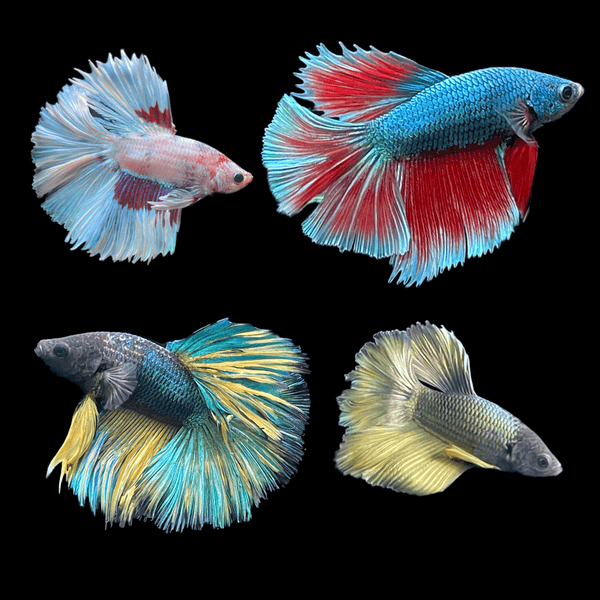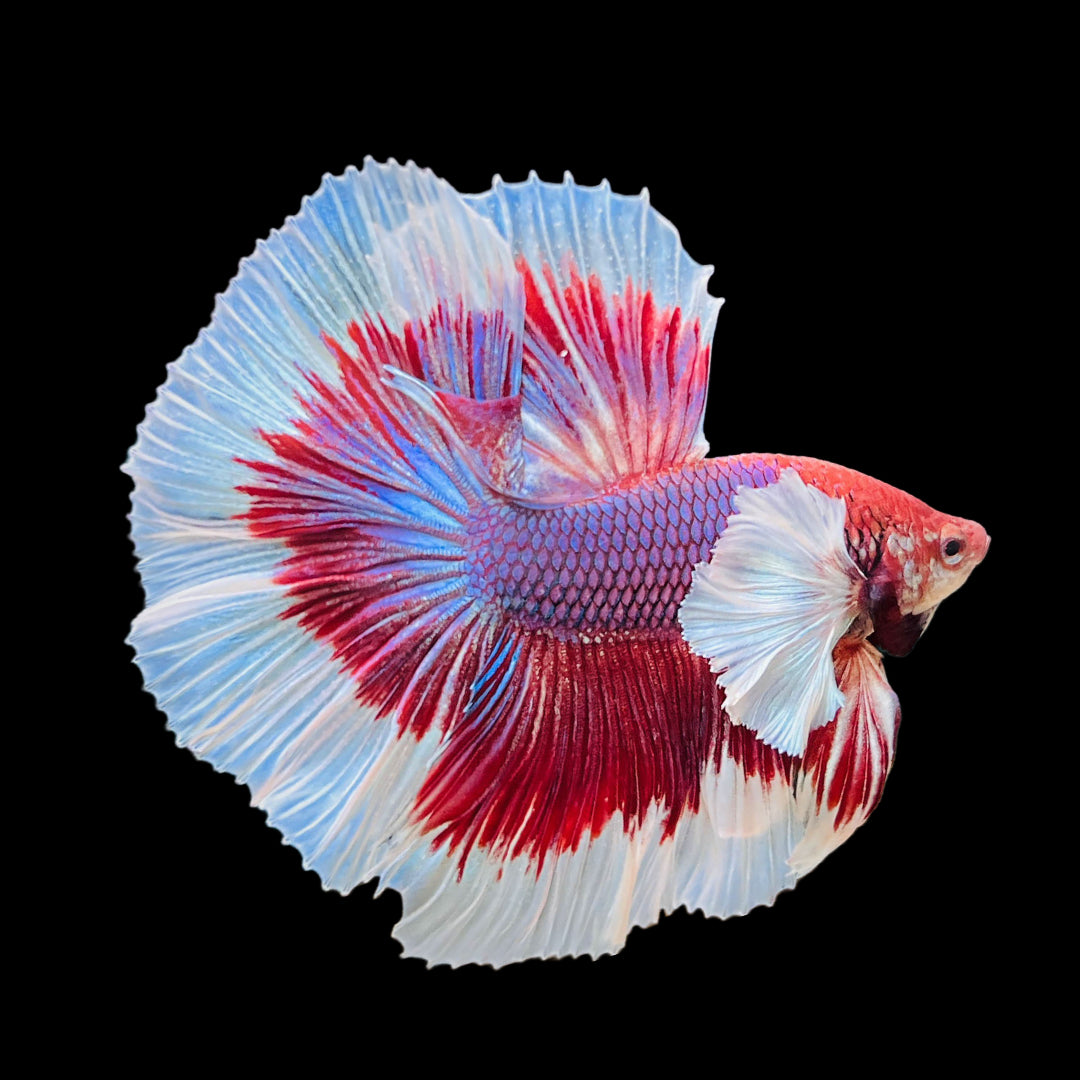Breeding Betta Fish: a Comprehensive Step-By-Step Guide to Effectively Raising Child Bettas From Eggs to Their Adult Years
Reproducing Betta fish is a careful venture that needs careful planning and execution to guarantee the effective advancement of fry from eggs to mature fish. As the male Betta diligently constructs a bubble nest and guards the valuable eggs, the succeeding stages of treatment and shift need interest to detail and knowledge of finest methods.

Selecting Breeding Pairs
When starting the trip of reproducing Betta fish, picking the best breeding sets is essential to attaining desirable qualities and a healthy and balanced family tree - betta fish. The first step in this process is to recognize the details attributes you desire to enhance or maintain, such as shade, fin kind, and body form. It is necessary to pick genetically diverse sets to prevent inbreeding, which can result in wellness problems and undesirable characteristics
Examine prospective reproducing prospects carefully. A healthy and balanced male Betta ought to display vivid colors, an active disposition, and well-formed fins, while the female needs to likewise present dynamic pigmentation and a rounded stomach, showing readiness for spawning. Observing the character of both fish is important, as aggressive or overly shy individuals may not reproduce successfully.
Documents of family tree is similarly essential. Keeping documents of the parent fish's origins can help you track genetic traits and prospective issues. In addition, consult trustworthy dog breeders or online resources for support on picking suitable pairs. Eventually, investing time in the option procedure will considerably improve the chance of producing strong, lively children that fulfill your breeding goals (betta fish).

Preparing the Reproduction Tank
Developing an optimal reproduction environment is a vital step after choosing appropriate pairs for Betta fish. The breeding storage tank must be specifically developed to give convenience and promote the natural breeding actions of the fish. Start with a storage tank size of a minimum of 10 gallons to make certain ample room for both the male and female Bettas.
Keep a gentle filtration system to keep the water tidy while avoiding strong currents that can emphasize the fish. Additionally, an air stone can be contributed to offer oxygenation without interrupting the water surface excessive.
Temperature level regulation is crucial; goal for a steady array of 78-82 ° F(25-28 ° C) utilizing a reliable heating system. The pH degree must be preserved between 6.5 and 7.5, and normal water changes are required to ensure high water quality.
Incorporate drifting plants or spawning mops to create hiding areas for the lady, while likewise urging bubble nest building by the male - betta fish. Ultimately, guarantee the container is devoid of sharp decors and any type of potential dangers, as the well-being of the fish must constantly be prioritized during this crucial stage of breeding.
The Breeding Process
Generally, the breeding procedure for Betta fish entails a collection of distinctive and observable habits that indicate preparedness for recreation. The male Betta starts by constructing a bubble nest at the water's surface, which acts as a website for my link the fertilized eggs. This nest is important, as it supplies a safe setting for the eggs up until have a peek at these guys they hatch out.
When the nest is established, the man will certainly present courtship behaviors, such as flaring his fins and displaying vivid shades to bring in the lady. The woman, upon picking up the male's preparedness, will respond by displaying vertical red stripes along her body, signifying her receptiveness.
When the female strategies, the male involves in a breeding dancing, commonly leading to an embrace called the "spawning." Throughout this accept, the woman launches her eggs, which the male fertilizes immediately. The fed eggs then are up to the bubble nest, where the male thoroughly collects and returns them to the nest. Following this, the male presumes obligation for guarding the nest and guaranteeing the security of the eggs up until they hatch out, typically within 24-36 hours. This phase is vital in the reproducing process, laying the foundation for effective fry growth.
Taking Care Of Betta Fry
Looking after Betta fry calls for mindful focus to their environment and nutrition to ensure healthy development and growth. After hatching, Betta fry are exceptionally tiny and vulnerable, necessitating a steady and clean environment. Maintaining a water temperature level between 78 ° F and 80 ° F is important, as Betta fry flourish in cozy conditions. Additionally, ensure that the water is without harmful toxic substances; routine water modifications of 10-20% are advised to preserve optimum water top quality.
Feeding Betta fry is equally important. They must be supplied infusoria or carefully crushed top notch fry food, as their mouths are as well tiny to handle larger particles. As they expand, you can gradually introduce bigger foods, such as baby read review salt water shrimp or powdered flakes, to ensure they obtain ample nutrition. Feed them tiny quantities a number of times a day, taking care not to overfeed, which can result in water high quality concerns.
Transitioning to Adult Bettas
As Betta fry mature, transitioning them to grown-up Bettas is an essential phase that calls for careful monitoring of their setting and social communications. This procedure typically begins when the fry get to around six weeks old, at which point they can be slowly presented to a much more structured living setting.
To facilitate this transition, it is necessary to make certain that the water specifications-- such as temperature, pH, and ammonia levels-- are optimum and stable. Grown-up Betta fish prosper in cozy water (around 78-80 ° F) with a pH of 6.5 to 7.5. Gradually acclimate the fry to these conditions to minimize stress.
Social communications are an additional key element; male Bettas are infamously territorial and hostile. For that reason, it is suggested to separate males into private tanks as they grow. Female Bettas can be housed together, however care must be required to monitor for indications of aggression.
Additionally, nutritional adjustments should be made as the fry grow. Integrate premium pellets and live foods to support their development and wellness. By taking care of these factors successfully, you can advertise a successful change to adulthood for your Betta fish.

Final Thought
Effective reproduction of Betta fish needs careful attention to information throughout the entire procedure, from picking genetically varied pairs to giving optimum look after fry. By making sure ideal reproduction conditions and maintaining water high quality, the possibility of healthy offspring boosts significantly. Furthermore, a well balanced diet plan and progressive adaptation to adult environments are critical for the growth and growth of Betta fish. Following these actions faithfully cultivates a growing populace of Betta fish, improving both their wellness and vitality.